Edge Computing Leading Revolution: Efficient AI Inspection
Edge Computing Leading Revolution: Efficient AI Inspection
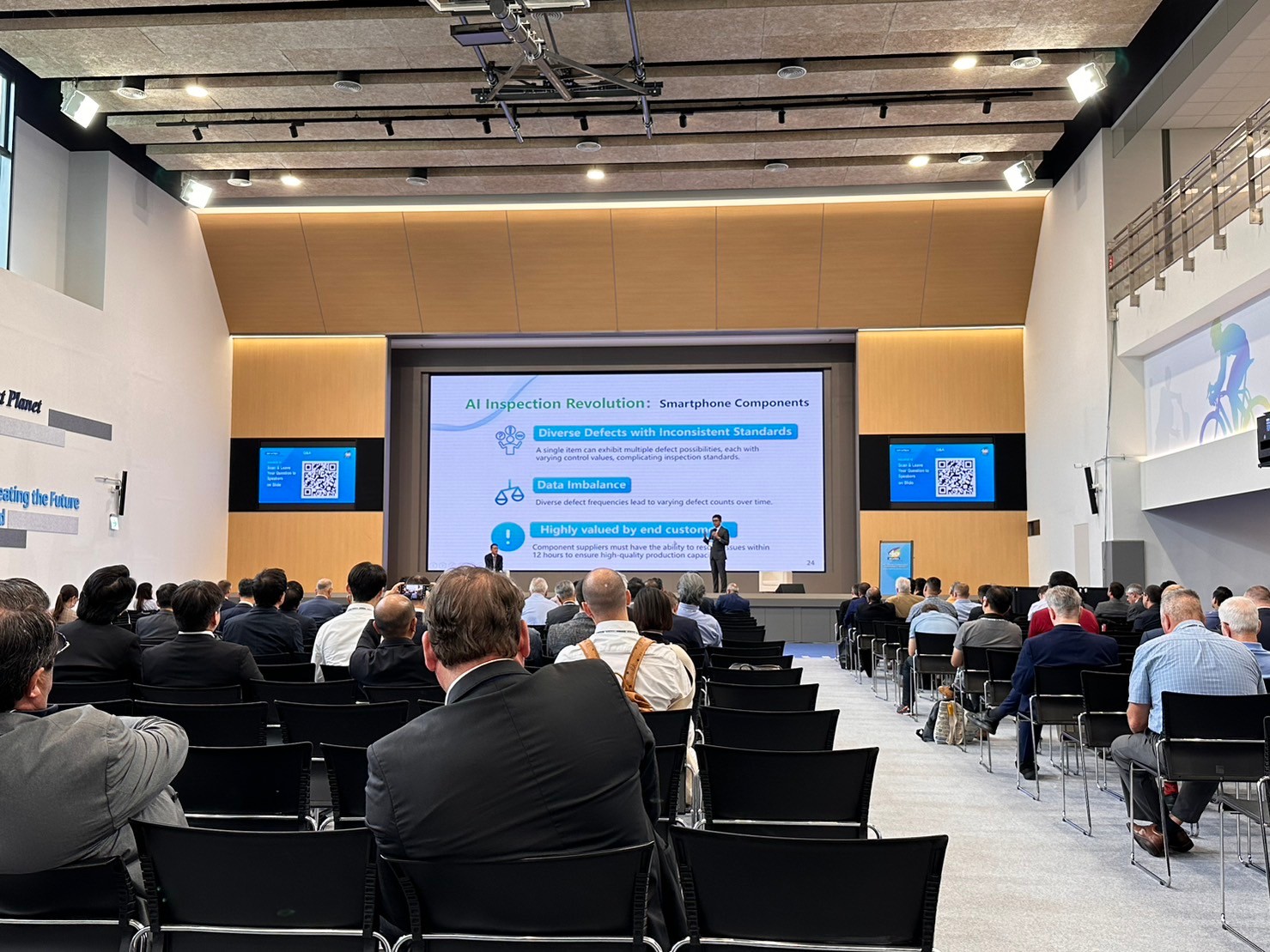
At the China Partner Summit last month, Advantech's Chairman, KC , announced that Advantech would focus on AIoT and edge computing as core strategies.
At this global event, Advantech built upon this strategy by actively exploring how AI, 5G, cloud computing, and edge intelligence technologies can drive industrial upgrades and revolutionize various markets
Edge Computing Thrives in Manufacturing
In manufacturing, edge technologies are rapidly becoming an indispensable force for digital transformation on the production line. Edge computing significantly enhances production efficiency and operational flexibility.The manufacturing industry deals with vast and real-time data daily. Historically, limitations in manpower and technology meant that this data was not fully utilized. However, with the rise of edge computing, computation, storage, and software applications have moved to the edge of production, greatly reducing the challenges of handling large volumes of real-time data.
Edge computing provides an ideal solution for the manufacturing industry, opening up new possibilities for applications and facilitating the development of production lines.

(Edge computing aligns with the computational and storage requirements for vast real-time data in manufacturing. Image source: Ruwan)
Recognizing the benefits of edge computing for production lines, Spingence integrated Advantech's edge computing computers (MIC-733) to provide customers with a comprehensive AI Inspection solution. This approach aims to assist customers from various industries in overcoming the entry barriers for implementing AI.
Key Competition in the Electronic Component Industry
Electronic components have always been a highly competitive field for Taiwanese and Chinese companies. To succeed in this fiercely competitive sector, companies must possess multiple advantages to gain the favor of critical end customers. This includes rigorous quality control, excellent cost management, and rapid market responsiveness.
1. Rigorous Quality Control
Given customers' high expectations for product quality, electronic component manufacturers need to continuously optimize their processes to improve yield. They must also invest heavily in inspection to ensure that products are defect-free before they reach assembly or downstream companies.
2. Excellent Cost Management
Electronic connectors often involve multiple stages of production, including stamping, forming, assembly, and final inspection. Cost control at various production stages is crucial because the cost structure is often influenced by upstream price control of materials like metal and plastic. Effective cost reduction in these stages allows for better cost control and is a primary concern for many industry players.
3. Rapid Market Responsiveness
Consumer electronics products evolve rapidly, and the smartphone market is highly competitive. The production and delivery of electronic components usually follow strict timelines. Therefore, early detection and rapid resolution of issues are crucial to ensure that the production process remains on schedule.
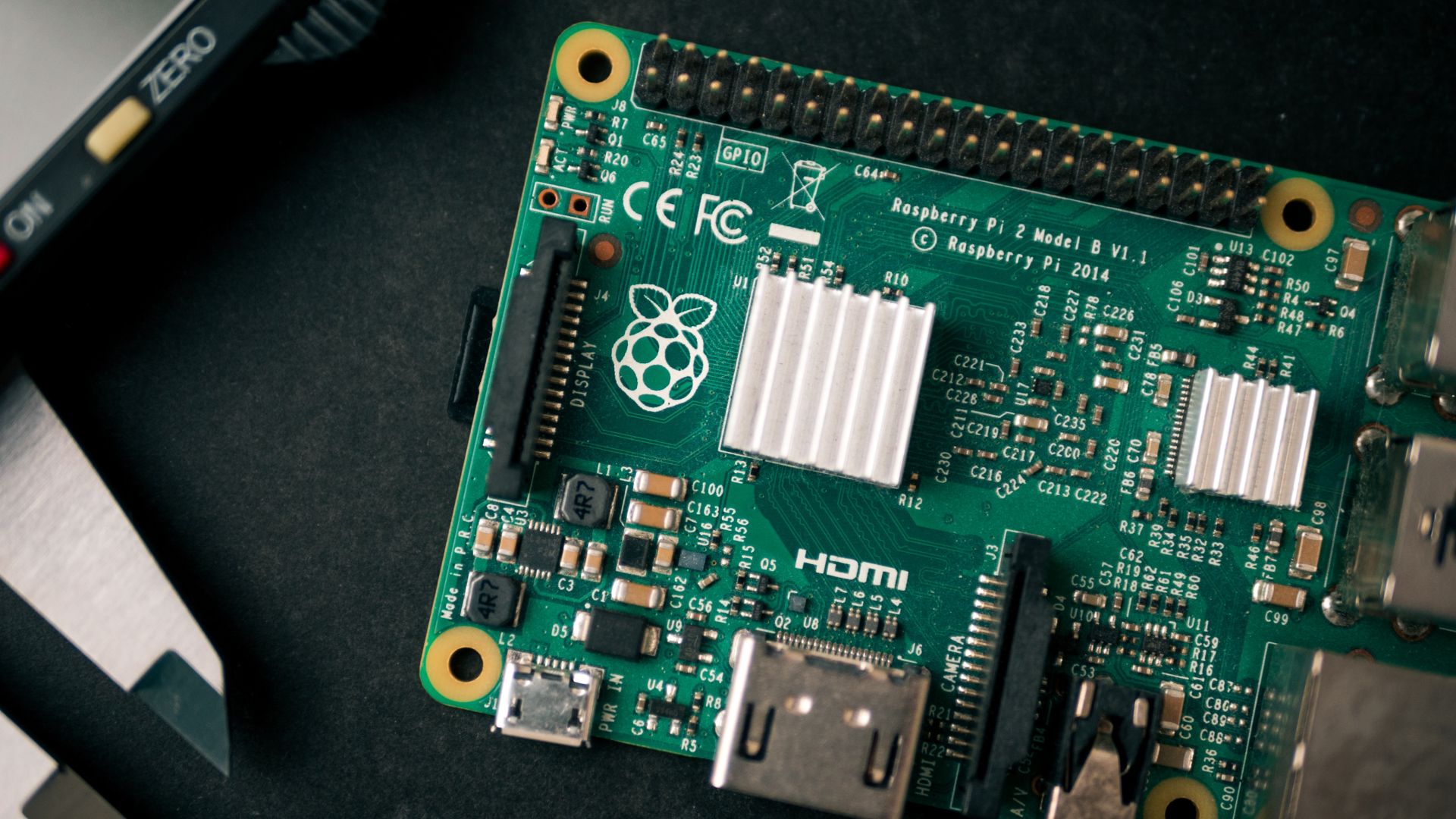
Detect Earlier, Save More!
Spingence provides customers with a full range of AI defect detection solutions, extending from semi-finished product inspection to finished product appearance inspection.
In addition to ensuring that the products are strictly inspected, we observe that for high-value products, AI defect detection is used in the front-end manufacturing process. Early detection of defective semi-finished products and further processing will effectively help to control costs.This will effectively help to control costs and avoid the loss of production capacity due to defective products at the end of the manufacturing process or before shipment.
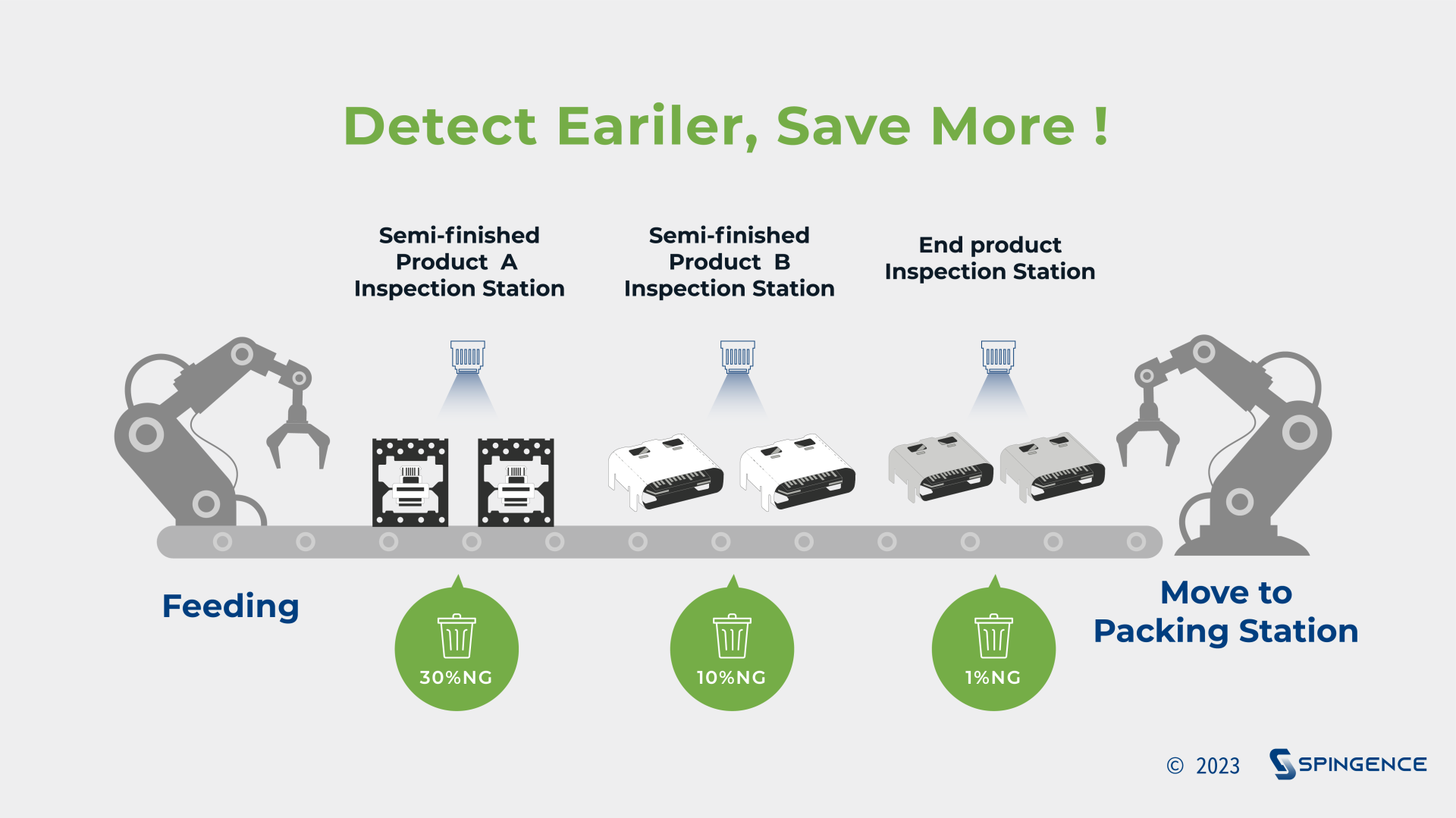
(Image source: Spingence)
As shown in the figure, each component undergoes multiple stages of production, and our customers set up inspection systems to optimize the yield at each station, allowing them to use it as a benchmark for production line optimization.
However, it is highly likely that defects may occur between different stations due to factors like machine operation, robotic arms, transfer devices, and dust. Thus, early rejection of defective products at different stages can prevent defective products from entering the next production phase, ultimately reducing waste.
The Necessity of Flexible AI Resource Expansion
External appearance inspection of electronic components is a critical production stage, crucial for ensuring product quality and protecting brand reputation.
During this process, various aspects must be considered, including dimension inspection, waterproof inspection, insertion and extraction force testing, and external defect detection. Each detail must undergo highly precise scrutiny. The presence of defects can have a severe impact on the functionality and reliability of products, potentially damaging the reputation of the end brand, a situation that manufacturers absolutely want to avoid.
Furthermore, electronic components are often produced in high volumes, making production cycle times and inspection speeds crucial for manufacturers. They aim to ensure that the defect recognition process for each unit product is completed within seconds to maintain production efficiency and meet market demand.
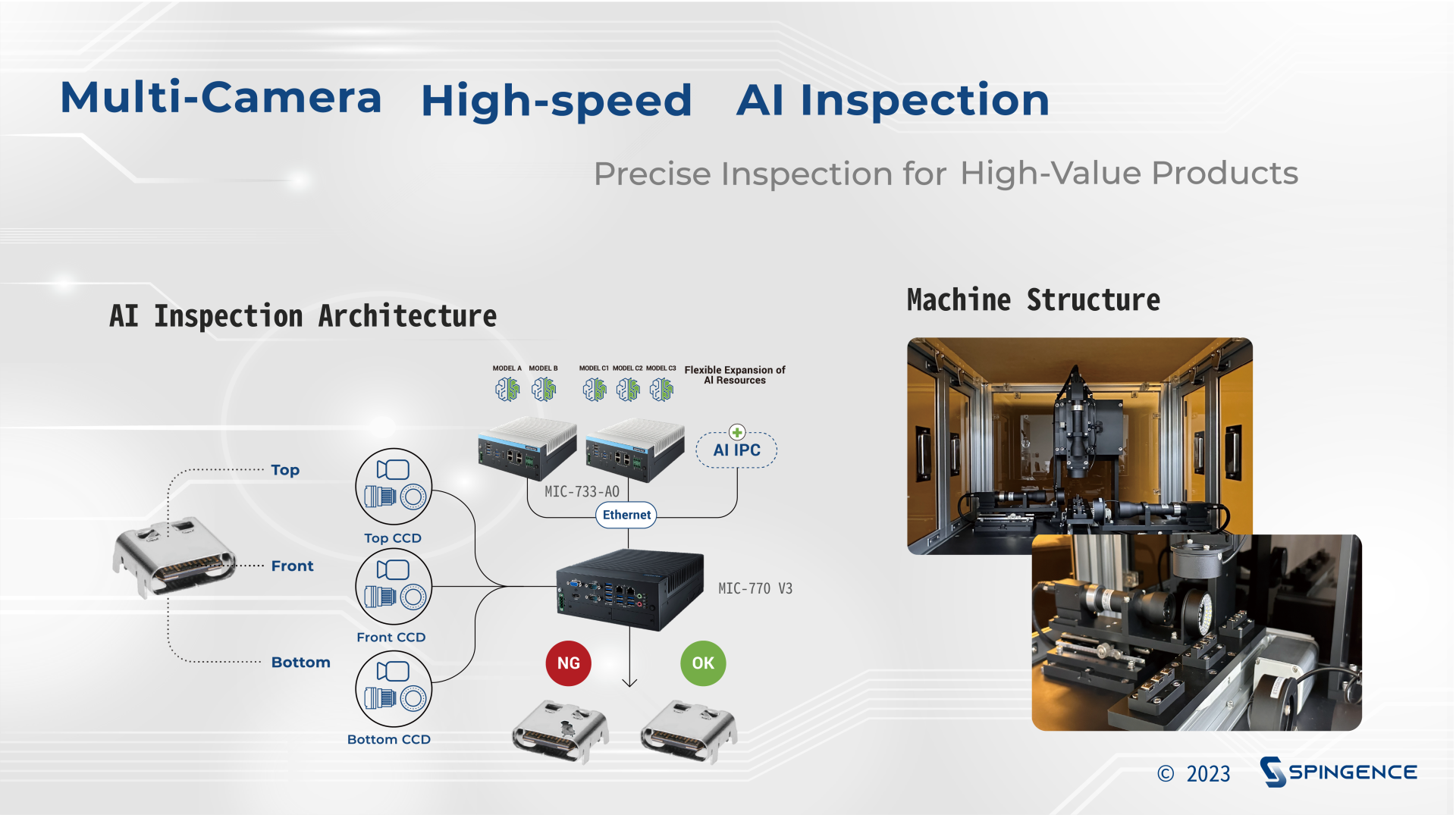
(Image source: Spingence)
As shown in the figure, multiple sets of CCDs are used with suitable lenses and lighting for precise multi-angle inspection, ensuring defect-free products from various angles.
To meet the demands of multi-Camera inspection and high-speed inference, Spingence offers a complete system architecture and AI engine expansion solution. Combining hardware expertise with the convenience of edge computing, it fulfills customers' performance requirements with the most suitable hardware investment for the best operational efficiency.
Multi-Camera High-Speed AI Inspection Solution
At the WPC, Spingence presented a comprehensive machine framework for the "Multi-Camera High-Speed AI Inspection Solution" tailored for the electronic component industry.
This precision inspection solution is designed for high-end product components or applications with specific safety requirements, such as automotive, defense, aerospace, and more.
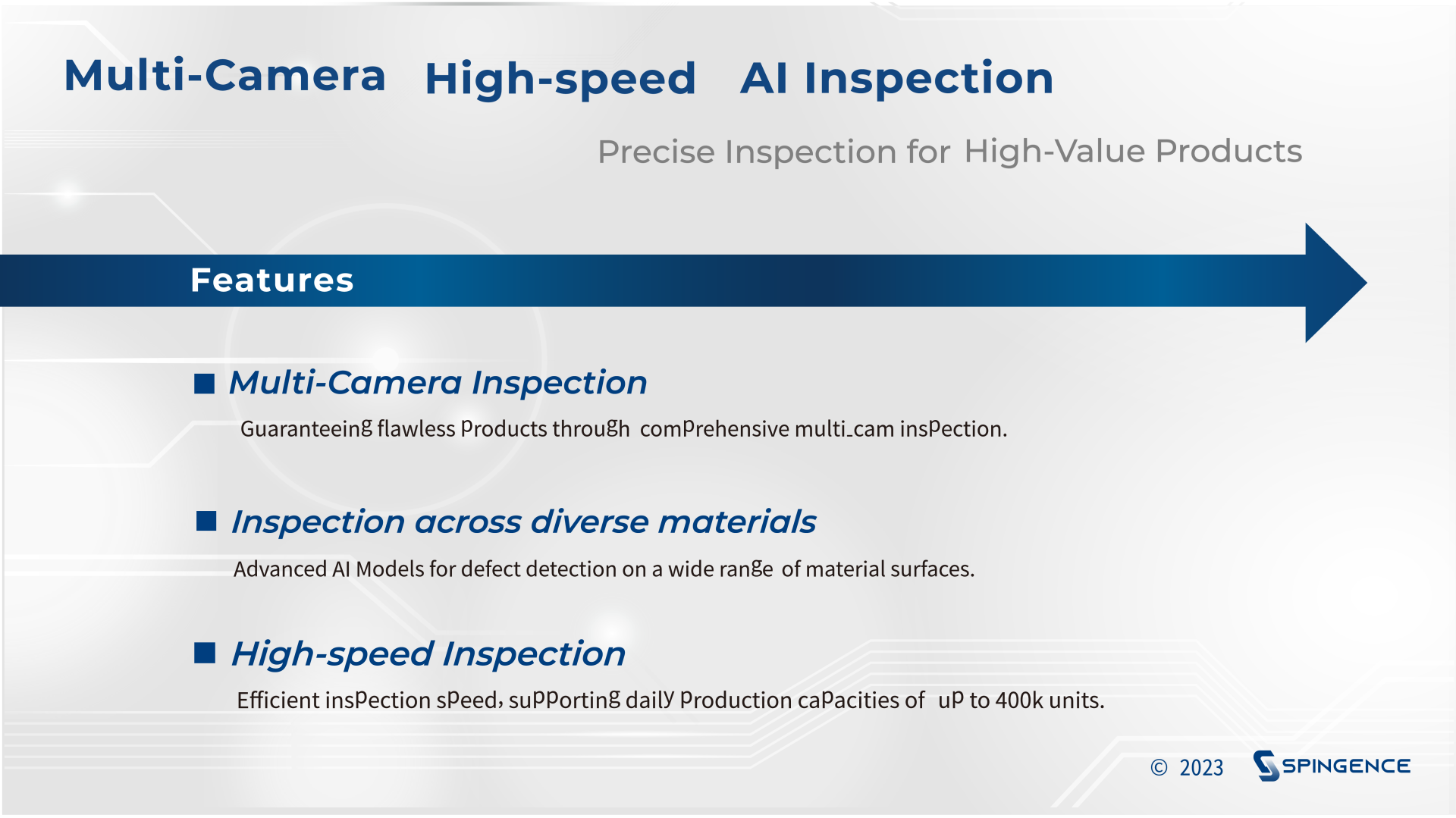
(Image source: Spingence)
The machine features three key characteristics to meet the most urgent needs of production lines:
1. Simultaneous Multi-Camera Inspection
Using multiple sets of CCDs with different imaging devices, suitable lenses, and lighting, the machine accurately performs multi-angle inspections to ensure that products are free of defects from various perspectives.
2. Adaptable Models for Different Materials
Electronic component products often feature different materials, such as plastic and metal, on the same surface, and each material can produce specific defects.
3. High-Speed Inspection
By utilizing real-time inference with edge computing and a multi-inspection tray design, the system achieves high-speed inspection to meet the production capacity of different workstations.
To ensure image clarity under the same shooting conditions, Spingence has integrated rich professional knowledge and experience. This expertise is derived from past vision integration cases, ensuring that various defects can be captured under the same imaging conditions while maintaining image clarity.
Additionally, Spingence has in-depth knowledge of model training strategies for different industries and understands the inspection requirements of production lines. These experiences allow Spingence to fine-tune AI models precisely to provide exceptional recognition and classification capabilities to handle various defects on different materials. They can quickly train models to meet the real-time application requirements and ensure efficient and reliable defect detection.
Spingence Technology is committed to providing the highest quality AI defect detection solutions. We understand the challenges that the manufacturing industry faces, especially in scenarios where high-speed production and multi-Camera inspection are required.
Through edge computing and precise model tuning, Spingence can help you detect product defects early, reduce production costs, and ensure that high-quality products enter the market.



